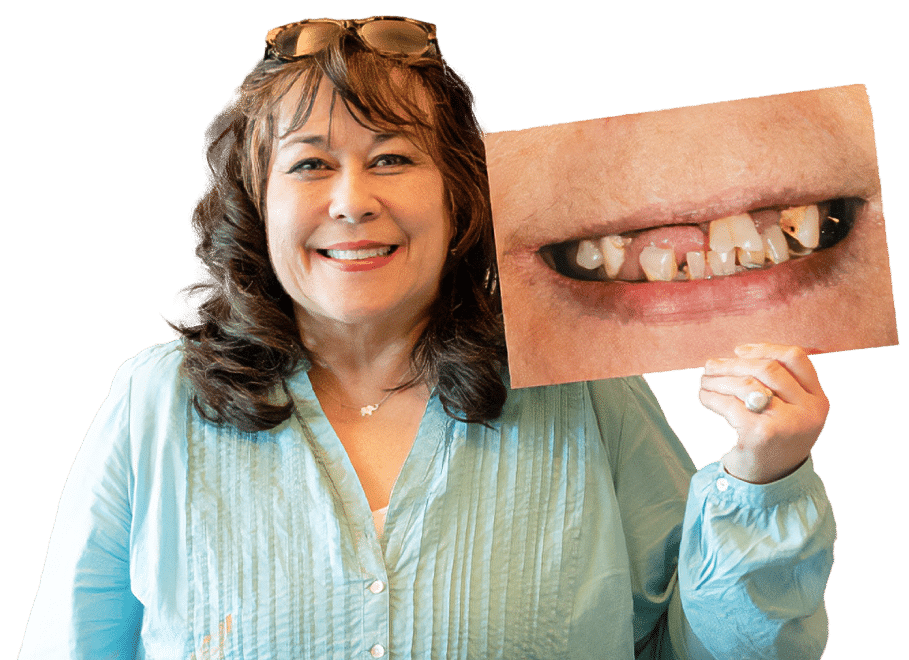How Much Do Dental Implants Cost?
A common question cosmetic dentist Dr Lance Timmerman DMD in Tukwila gets is, “How much does a dental implant cost?” The best answer: It depends.
There are so many variables to consider that answering this over the phone is impossible. Some things to consider include:
- How many teeth are missing?
- How long have the teeth been missing?
- How many will be replaced?
- What kind of provisional restoration will be used?
- What kind of bone is present?
- Are sinuses an issue?
- How close are adjacent teeth?
- Is the lower nerve in the way?
- How thick and wide is the bone where the implant will go?
- How soon must the treatment be done?
- Will the restoration stay in the mouth or will it be removable?
Implants come in three parts
The three main parts to consider with dental implants are the titanium implant, the restoration and the connector (abutment) that connects the restoration TO the implant. Some advertising offices market a cheap implant, but only discount the titanium part. This allows them to inflate the other parts to compensate, so the total treatment cost ends up being the same as everyone else. Usually the discounts come with a condition that the entire case must be done in that location, meaning the discount to the titanium implant applies only if the abutment and crown/restoration are done there as well (no getting a cheap implant and finding another office for a cheap abutment and crown).
Missing teeth
The procedure for replacing a single missing tooth is much less complex than when many teeth are missing. When two or three teeth are missing, 2-3 implants can support a bridge and a smile is complete. If an entire arch of teeth is missing, then many implants should be placed to support a variety of options of restorations. Rule of thumb is to have 8-10 implants on the upper arch, 6-8 implants on the lower arch.
Length of time missing teeth
When teeth are lost, the remaining bone changes. Over time, the volume of bone shrinks, so if a person desires an implant later in life, extra steps may be needed. A common procedure is a bone graft. This increases bone volume, allowing placement of a dental implant, but can add both time and expense to the treatment plan.
Temporary restorations
While the implant is placed, we must wait for the bone to fuse to the implant (osseointegration). During this healing time, there are choices. One can simply live with a space, or a temporary restoration can be placed. Temporaries can be screwed in place (removed only by the dentist) or removable, like an orthodontic retainer.
Bone quality
Dense bone is more stable than porous bone. Different areas of the mouth have different densities, so the type of implant and method of surgical placement is influenced by where the implant is placed.
Sinuses
When placing upper jaw posterior implants, location of the sinus is a factor. Over time, the sinus floor can descend (pneumatization) and become a problem if an implant is desired. A sinus lift is commonly performed to create room for an implant.
Space between teeth
The survival of remaining teeth and the implant itself depends on blood supply. If implants are too close to each other or nearby teeth, they will eventually fail. Orthodontics may be an option to create space.
Lower jaw nerve
The inferior alveolar nerve is problematic for lower posterior teeth. Ideally implants are very long, but the location of the nerve may not allow long implants to be placed. Options may include repositioning the nerve, using a shorter implant, or using an angled implant to go around the obstacle.
Bone thickness
Dental implants need to be completely “immersed” in bone for stability. This means if the thickness of bone is 3 mm wide, a 5 mm implant is too big. In gardening, potted plants can go from small pots to larger pots, but not the other way around. If the bone is not thick enough, a bone graft may be an option.
Time frame
One unavoidable drawback with dental implants is time. Osseointegration (bone fusing to the implant) takes 3-6 months before a final restoration can be placed. Often temporary (provisional) restorations appear like final restorations and can be worn for extended periods of time to help mitigate frustration, but some things can’t be avoided. If the goal is to be done in a single visit, dental implant treatment may not be the best treatment option.
Final restoration
Before starting out, one must “Begin with the end in mind.” The final restoration needs to be decided before starting treatment, as the size, location and number of implants varies from option to option. When stabilizing a denture, two implants are often enough. A fixed restoration can sometimes be supported with 4 implants, but material type is limited. A lifelike porcelain restoration is strongest and requires several implants for longevity and strength.
With all these options, it is best to have an experienced cosmetic implant dentist guide you. Call (206) 241-5533 to meet with Dr. Lance Timmerman.



